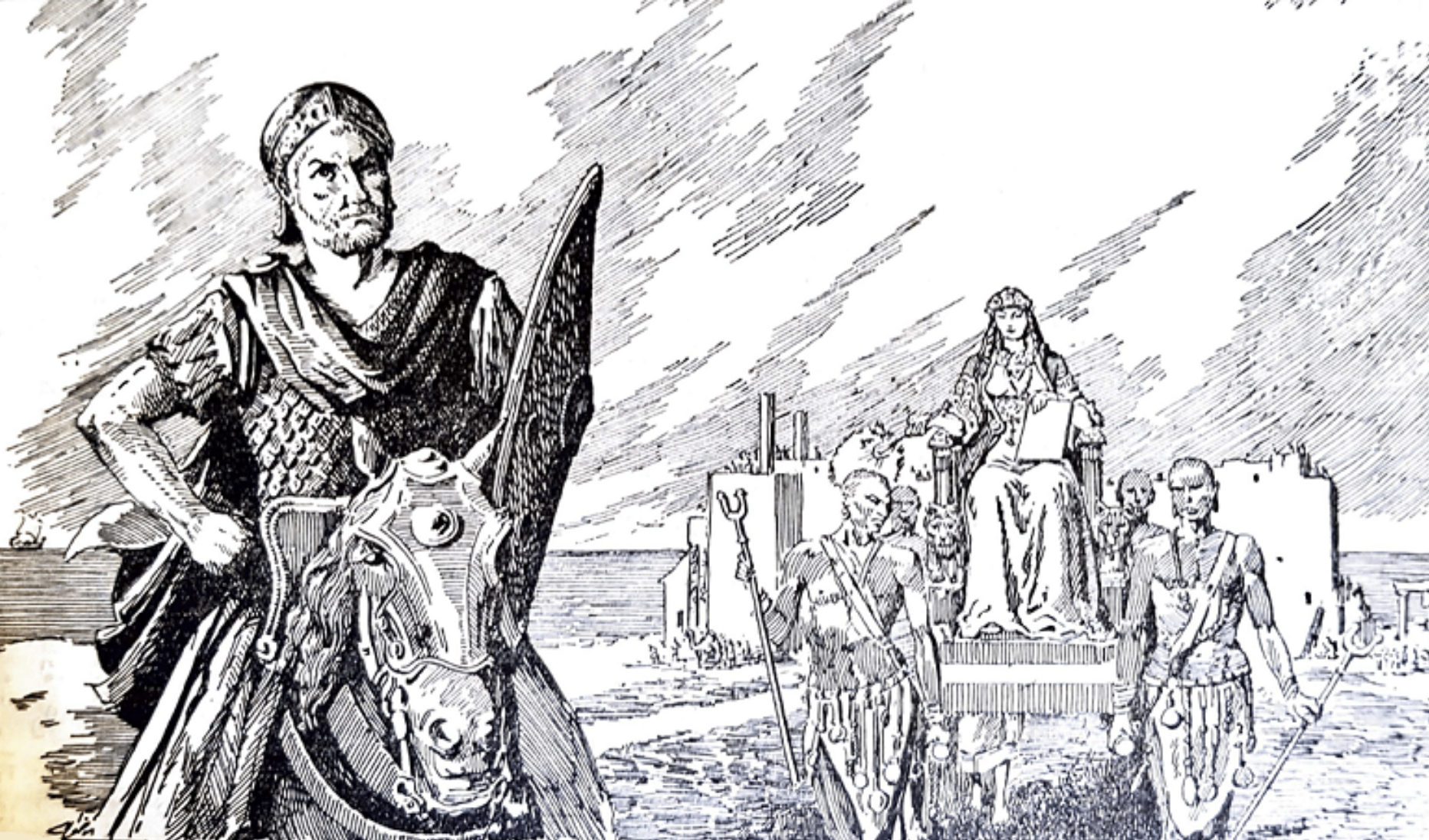How Hannibal Barca took on the world

Dido’s, queen of Carthage, Royal Procession preceded by Hannibal. Wikimedia Commons/Public Domain.
SUMMARY
Travel way back in time to the ancient world. The year was 216 B.C.E and the stage was set for one hell of a battle. Enter Hannibal Barca, famed Carthangian general, who would pit himself and his forces against the Roman legions. Led by the consuls Lucius Aemilius Paullus and Gaius Terentius Varro, this was an epic showdown.
Too bad all of that was about to change, all thanks to Hannibal and the Battle of Cannae.
The world at the time
At this time, Rome was already a dominant force in the Mediterranean, having conquered vast territories and established its influence across much of Europe and the Mediterranean basin. However, Carthage, a wealthy city-state in North Africa, posed a significant threat to Roman supremacy.
Enter Hannibal, the storied military genius and son of the Carthaginian general Hamilcar Barca. Born in 247 BCE, Hannibal was the son of Hamilcar Barca, another renowned Carthaginian general. From an early age, Hannibal showed remarkable aptitude for warfare. Accounts reflect he also expressed - loudly - his desire to avenge Carthage's previous defeat at the hands of Rome in the First Punic War.
But who was Hannibal, really?
Hannibal's military career began at a young age when he accompanied his father on campaigns in Spain. It was here that he honed his skills as a commander and gained invaluable experience in leading troops. After his father's death, Hannibal assumed command of the Carthaginian forces in Spain. There, he continued to wage a relentless war against Rome.
Hannibal's audacious strategy was to take the war directly to Rome's doorstep. Instead of engaging the Roman legions on their own turf, he embarked on a daring journey across the Alp. As he led his troops into Italy, you can't help but wonder what kept him driving on. Was it simple rage? Or was it something more? Chances are it was probably a combo of wanting to avenge his country and wanting to provide his bad-assery. Really, though ... can you blame him? Anyway, once they arrived in Italy, the Romans were completely off guard. In turn, this demonstrated Hannibal's unwavering determination and resourcefulness.
The Battle of Cannae, fought in 216 BCE, stands as the pinnacle of Hannibal's military genius. His cunning tactics and meticulous planning led to a resounding victory over the Romans. The battle showcased his ability to outmaneuver and outthink his adversaries, as well as his remarkable skill in utilizing cavalry to devastating effect.
Despite his many victories, Hannibal was ultimately unable to bring about a decisive defeat of Rome. Rome's resilience and ability to adapt proved formidable, and they gradually turned the tide of the war against Carthage. Hannibal faced numerous setbacks and was eventually recalled to Carthage to defend his homeland against a Roman invasion.
All the deets
Now that we know the players, let's look at the battle.
The Battle of Cannae took place in Apulia, in southeastern Italy. Hannibal, with his army composed of Carthaginians, Gauls, and other allies, faced a Roman force estimated to be around 80,000 soldiers. Although outnumbered, Hannibal possessed superior cavalry and was renowned for his tactical brilliance. He devised a plan that would exploit the Roman tactics of the day, which relied heavily on their formidable infantry, the legions.
Hannibal arranged his troops in a crescent-shaped formation, with the Gauls and other allies forming the wings, while his veteran Carthaginian infantry held the center. This deployment was designed to lure the Romans into the center of the formation, where they would be surrounded and overwhelmed. Hannibal's cavalry, placed on the flanks, would then launch devastating attacks on the trapped Roman forces.
The battle commenced with the Romans advancing confidently, pressing against the center of the Carthaginian line. However, as the Romans pushed forward, they became increasingly vulnerable to Hannibal's encircling maneuver. The Carthaginian cavalry, skillfully commanded by Hannibal's brother, Maharbal, swept around the Roman flanks, cutting off their retreat and wreaking havoc from the rear.
Caught in a deadly trap, the Roman legions fought valiantly but were quickly overwhelmed. The tightly packed Roman formation played into Hannibal's hands, allowing his troops to close in and decimate the enemy. The battle was a slaughter, with estimates suggesting that up to 70,000 Romans lost their lives that fateful day. It was a resounding victory for Hannibal and a devastating blow to Rome.
After the smoke cleared
The Battle of Cannae had far-reaching consequences for both Rome and Carthage. The Roman Republic was left reeling from the defeat, and Hannibal's victory opened up the Italian peninsula to further Carthaginian advances. The battle demonstrated Hannibal's tactical genius and forced Rome to reevaluate its military strategies.
Rome's defeat at Cannae sent shockwaves throughout the Mediterranean world. Many of Rome's allies reconsidered their allegiance, with some even defecting to Carthage. The battle also inspired fear and awe in Rome's enemies, who saw the Republic's invincibility shattered by Hannibal's audacity and skill.
However, despite his remarkable triumph, Hannibal was unable to capitalize fully on his victory. The Roman Senate, faced with the dire situation, rallied its forces and implemented a strategy of attrition, avoiding direct confrontation with Hannibal and focusing on wearing down his army. Rome's resilience and its ability to adapt and learn from defeat ultimately turned the tide of the war.
The Battle of Cannae serves as a timeless example of the importance of strategy, adaptability, and the impact of battlefield tactics. Hannibal's innovative tactics continue to be studied and admired by military strategists to this day. The battle also highlighted the strengths and weaknesses of both Rome and Carthage, shaping the course of history and leaving a lasting legacy.
SHARE
